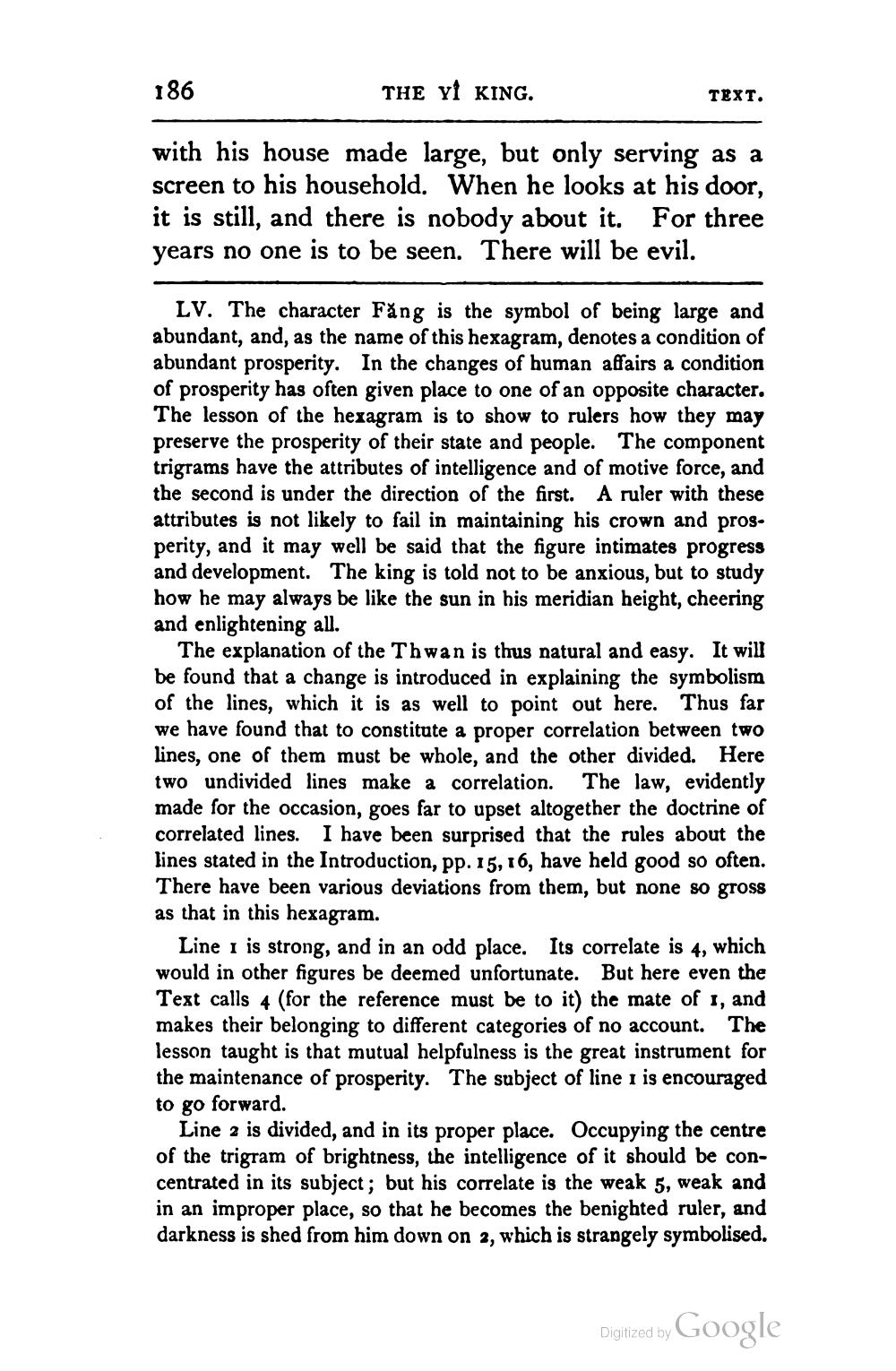________________
186
THE YI KING.
TEXT.
with his house made large, but only serving as a screen to his household. When he looks at his door, it is still, and there is nobody about it. For three years no one is to be seen. There will be evil.
LV. The character Fång is the symbol of being large and abundant, and, as the name of this hexagram, denotes a condition of abundant prosperity. In the changes of human affairs a condition of prosperity has often given place to one of an opposite character. The lesson of the hexagram is to show to rulers how they may preserve the prosperity of their state and people. The component trigrams have the attributes of intelligence and of motive force, and the second is under the direction of the first. A ruler with these attributes is not likely to fail in maintaining his crown and prosperity, and it may well be said that the figure intimates progress and development. The king is told not to be anxious, but to study how he may always be like the sun in his meridian height, cheering and enlightening all.
The explanation of the Thwan is thus natural and easy. It will be found that a change is introduced in explaining the symbolism of the lines, which it is as well to point out here. Thus far we have found that to constitute a proper correlation between two lines, one of them must be whole, and the other divided. Here two undivided lines make a correlation. The law, evidently made for the occasion, goes far to upset altogether the doctrine of correlated lines. I have been surprised that the rules about the lines stated in the Introduction, pp. 15, 16, have held good so often. There have been various deviations from them, but none so gross as that in this hexagram.
Line 1 is strong, and in an odd place. Its correlate is 4, which would in other figures be deemed unfortunate. But here even the Text calls 4 (for the reference must be to it) the mate of 1, and makes their belonging to different categories of no account. The lesson taught is that mutual helpfulness is the great instrument for the maintenance of prosperity. The subject of line 1 is encouraged to go forward.
Line 2 is divided, and in its proper place. Occupying the centre of the trigram of brightness, the intelligence of it should be concentrated in its subject; but his correlate is the weak 5, weak and in an improper place, so that he becomes the benighted ruler, and darkness is shed from him down on 2, which is strangely symbolised.
Digitized by Google




